What Is WHMIS? WHMIS stands for Workplace Hazardous Materials Information System. It is a comprehensive plan that will give you information about the safe use of hazardous materials that you might use in a Canadian workplace. Click on the following sections to learn more.
- What Is WHMIS Certification – A Detailed Description
- Why Is WHMIS Important?
- What Are the WHMIS Symbols and What Do They Mean?
- Brief History of WHMIS
- Who Needs WHMIS Certification in London, ON?
- Where Can You Get WHMIS Certification, London?
If you require workplace health and safety training, contact us.
1. What Is WHMIS – A Detailed Description
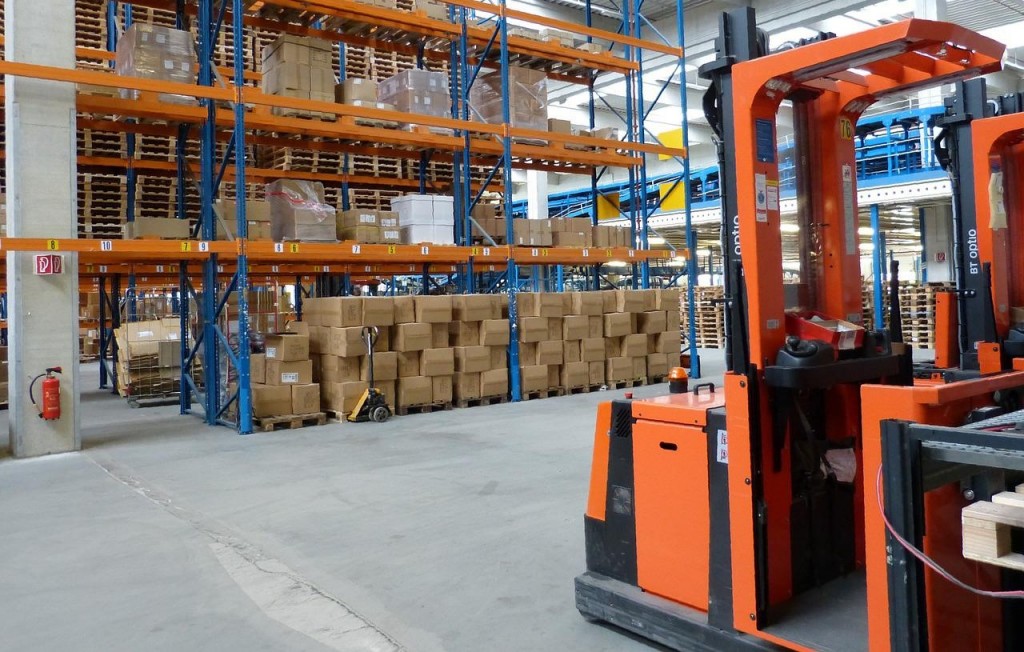
WHMIS stands for Workplace Hazardous Materials Information System – Canada’s national system for providing information on the safe use of hazardous products in the workplace.
If you live or work in London, Ontario, getting your WHMIS certification is essential for staying compliant with Canadian regulations and ensuring workplace safety.
WHMIS is built on three main components. Labels clearly identify hazardous products and outline key safety information at a glance.
Safety Data Sheets (SDS)—formerly known as MSDS—are detailed documents that explain the hazards, precautions, and first aid measures related to a product.
Finally, worker education and training ensures that employees understand how to read labels and SDS sheets, and know how to respond appropriately in case of exposure or an emergency.
The regulations outlined in WHMIS need to be followed. It is a law. Under this law, workers, employers, and suppliers have specific responsibilities.
Workers must complete WHMIS training and keep their certification up to date. They are expected to understand how to read labels and SDS sheets and report any missing or unreadable labels to their supervisor.
Employers are responsible for providing WHMIS training to all relevant staff, ensuring that hazardous products are properly labelled, and making SDS sheets easily accessible in the workplace.
Suppliers, including manufacturers, importers, and distributors of hazardous materials in Canada, must label controlled products according to WHMIS standards and supply up-to-date SDS sheets to their customers.
2. Why Is WHMIS Important?
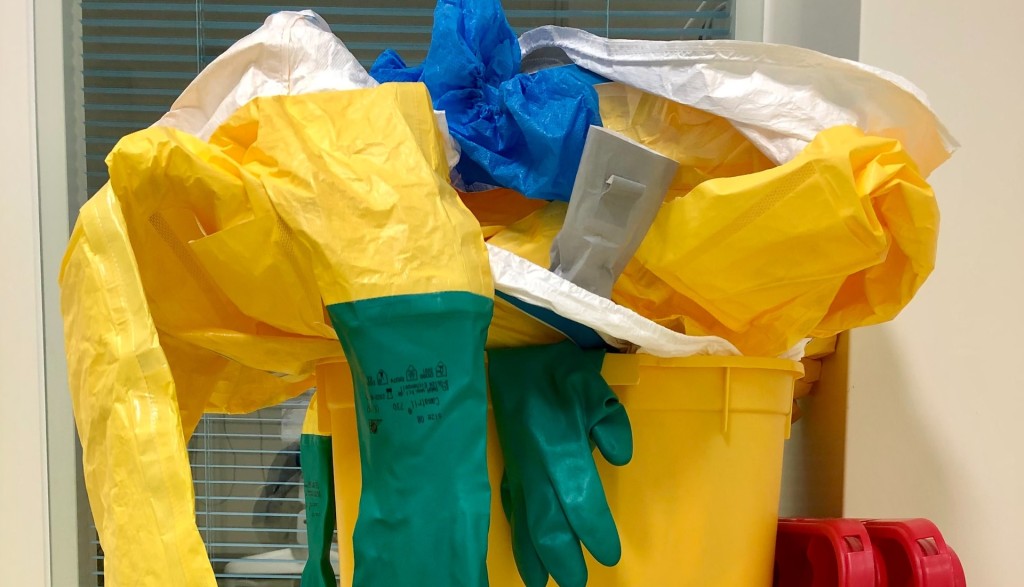
WHMIS is important because it can help protect workers who work around hazardous materials.
3. What Are the WHMIS Symbols and What Do They Mean?
*WHMIS 2015 is the most recent update of WHMIS.
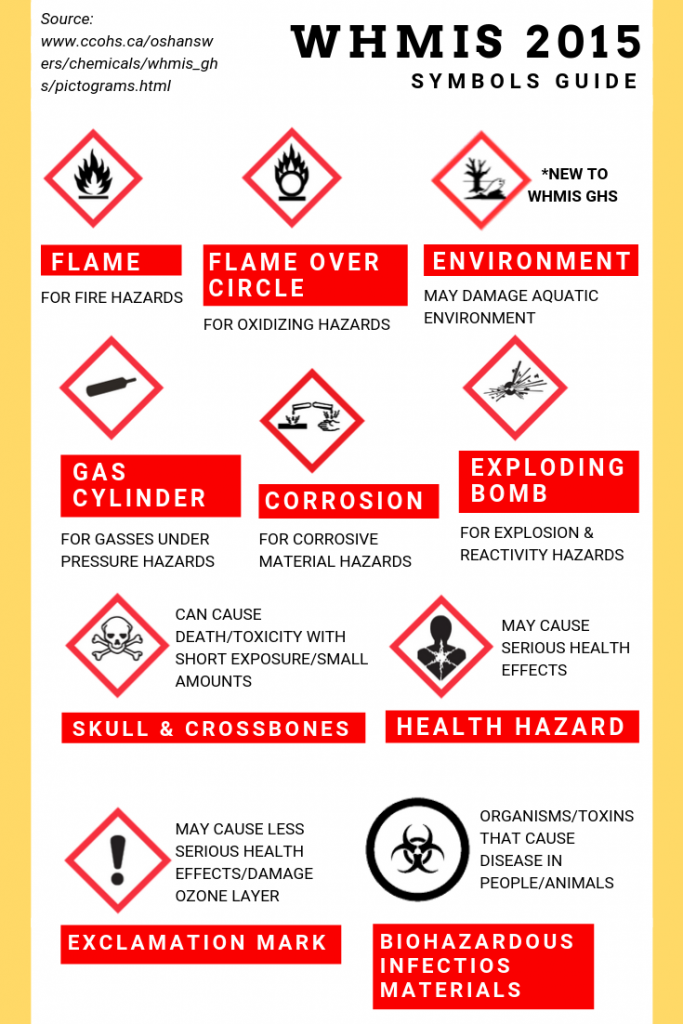
WHMIS uses a number of symbols or pictograms that are easily recognizable and help you spot a hazard with a quick glance. The symbols can tell you useful information, such as whether a product is flammable or if it might be a health hazard.
The above infographic displays the various current WHMIS symbols and what they mean.
4. Brief History of WHMIS
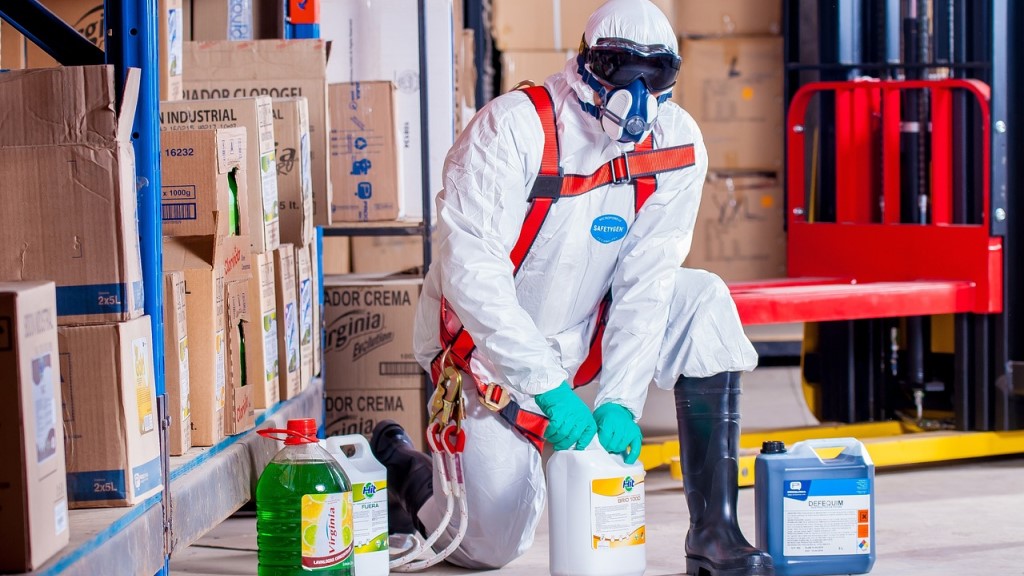
WHMIS became a law in Canada on October 31, 1988. Most of the requirements surrounding WHMIS were incorporated into the Hazardous Materials Information Review Act.
WHMIS was put together by a committee made up of representatives from the government, industries, and workers to make sure that it had the best interests of each group in mind.
The regulations in the act include:
- Hazardous Materials Information Review Regulations
- Hazardous Materials Information Review Act Appeal Board Procedures Regulations
- Ingredient Disclosure List
- Controlled Products Regulations
Controlled products refer to any products, materials, and substances that are regulated by WHMIS legislation. These products are grouped into the six WHMIS classes.
WHMIS regulations are enforced by different agencies depending on whether you are a federal, provincial, or territorial worker.
Federal workers:
They are regulated by the Labour Branch of Human Resources Development Canada.
Provincial or Territorial workers:
They are regulated by the agency responsible for occupational health and safety in your province or territory. For example, if you work in Ontario, then the Ministry of Labour, Immigration, Training and Skills Development is responsible for regulating WHMIS.
Click here for a complete list of agencies in each province and territory.
5. Who Needs WHMIS Certification in London, ON?

If you are a worker in London, ON, and you work with one or more hazardous products or you work around or close to hazardous products, then you legally need to take WHMIS training.
Your employer is responsible for developing, putting in place, and maintaining a WHMIS education and training program for you. When starting a new job, many workplaces require new workers to complete a WHMIS training course.
WHMIS certification in London is required if you:
- May be exposed to chemicals or a hazardous product during work activities (including normal use, maintenance and emergencies)
- Use, store, handle or dispose of hazardous products and materials at your workplace
- Supervise workers who may be exposed to, use, store, handle or dispose of hazardous products
- Work in emergency response situations
Your employer must review your WHMIS training and instruction with you at least once a year. This should be done in conjunction with the joint health and safety committee or the health and safety representative at your workplace.
Some of the most common industries that will require you to take WHMIS training include:
- Retailers
- Restaurant Employees
- Medical Professionals
- Construction Workers
- Factory Workers
This is not a complete list. If you work in a different industry and may be exposed to hazardous products in your workplace, you will be required to take WHMIS training.
6. Where Can You Get WHMIS Certification, London?
ACUTE helps organizations understand their training challenges while also taking care of the most crucial aspect of a safety program: providing unparalleled tailoring and customer service. Here are just a few things you can expect when training with ACUTE:

- Open Door Instructor-Student Partnership – ACUTE’s training services emphasize client participation. Staff want to build relationships with clients and serve as a touchstone for advice anytime moving forward.
- Serving Your Team and Industry – With a vast array of clients in manufacturing, construction, health, academic, and government agencies, ACUTE brings the best safety practices from across the spectrum to your workplace.
- 100 Years Combined Experience – ACUTE provides comprehensive health and safety training, on-site safety services, and consulting services. With over 100 years of combined experience, our staff offer more than theoretical or abstract ideas. ACUTE offers solutions.
- Track Record of Success – ACUTE is rated 4.9/5 stars on Google reviews, demonstrating a commitment to our clients, quality, and passion for training.
Ready for quality training in your workplace?
ACUTE is located in Waterloo, Ontario and services customers from cities such as London, Toronto, Mississauga, Brampton, Hamilton, Milton, Kitchener, London, Guelph, and other cities from across Ontario.
You May Also Need HAZWOPER Training
ACUTE can provide you with extensive hazardous materials training, including HAZWOPER training. HAZWOPER stands for Hazardous Waste Operations and Emergency Response.
HAZWOPER training is important for anyone who is exposed to hazardous substances and who is engaged in operations including clean-up, treatment, storage, and disposal of hazardous waste.
Workers involved in an emergency response operation dealing with hazardous waste and workers who have to perform duties at a waste site where hazardous materials or contamination exist, should be fully trained and protected.
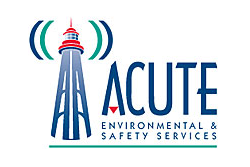
What Our Customers Are Saying…
Acute is recognized and respected as a people organization and they have been doing it right for a long time.
Acute has been a staple in supporting my companies over the years and have always delivered quality amd dependable service. Training programs are top shelf and a great facility for practical application. couldn’t recomend them more. keep up the great work folks.
We were referred to ACUTE on behalf of our employer for an n95 mask fitting – the staff here are professional, personable, and informative.
I’d come back here for any safety-related training in a heartbeat.

